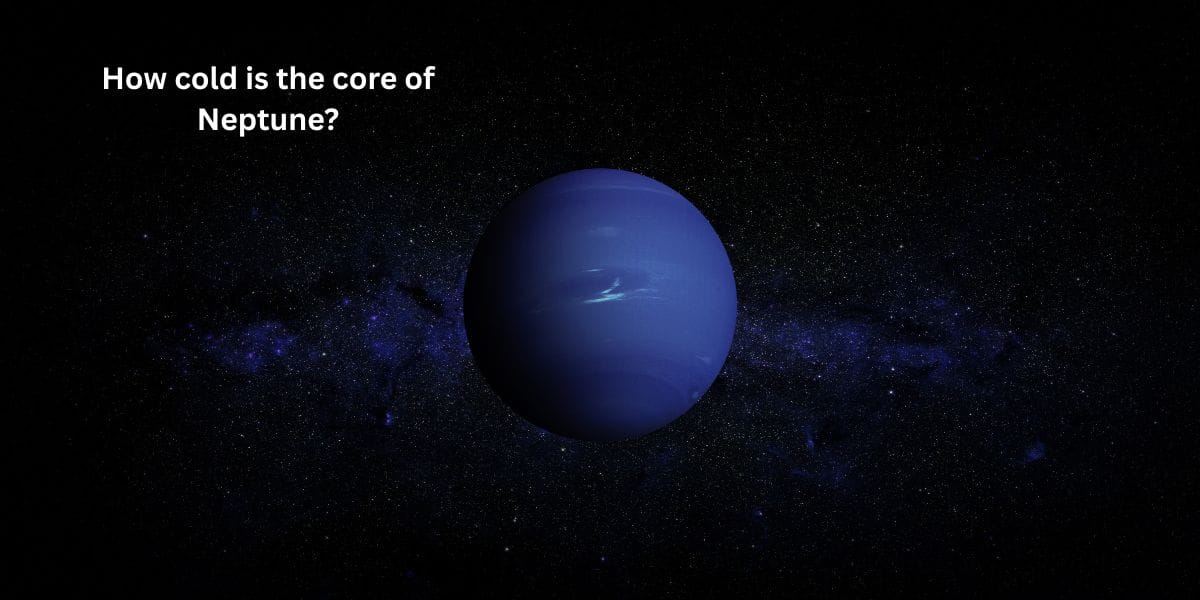Neptune is the farthest planet from the Sun in our solar system. It is a giant blue world, covered in swirling storms and icy winds. But what’s inside Neptune? Is it just as cold as its surface, or does it hide something different deep inside?
Scientists believe that Neptune has a hot, dense core, even though the planet is known for its freezing temperatures. How can a planet so far from the Sun have a warm center? And just how cold, or hot, is Neptune’s core? Let’s explore this mystery!
What Is Neptune Made Of?
Neptune is an ice giant, meaning it is mostly made of icy materials like water, ammonia, and methane. These substances are in a slushy, liquid form because of the high pressure inside the planet. Unlike rocky planets like Earth, Neptune does not have a solid surface.
- Atmosphere: Thick layers of hydrogen, helium, and methane gas.
- Mantle: A deep, hot ocean of water, ammonia, and methane.
- Core: A rocky and metallic center, possibly as hot as the Sun’s surface!
Even though Neptune is freezing cold on the outside, its core is extremely hot.
How Cold Is Neptune’s Surface?
Neptune is one of the coldest places in the solar system. The temperature on its outer clouds is around -360°F (-218°C). That’s colder than Antarctica in winter! The strong winds on Neptune make it feel even colder.
But as we go deeper inside the planet, the temperature changes. The pressure increases, and the icy materials turn into hot, dense liquids.
Is Neptune’s Core Hot or Cold?
Surprisingly, Neptune’s core is very hot—possibly around 9,000°F (5,000°C)! That’s almost as hot as the Sun’s surface. But how does a planet so far from the Sun stay warm inside?
The heat comes from:
- Leftover heat from when Neptune formed billions of years ago.
- High pressure squeezing the materials inside, creating heat.
- Radioactive materials in the core releasing energy.
Even though Neptune’s surface is freezing, its core is a burning ball of rock and metal!
Why Doesn’t Neptune’s Core Cool Down?
Neptune is very far from the Sun, so it doesn’t get much external heat. But its core stays hot because:
- The thick atmosphere traps heat inside.
- The dense layers of liquid and ice act like a blanket, keeping the core warm.
- The slow cooling process means it will take billions of years to lose its heat.
Unlike Earth, which loses heat quickly through volcanoes and tectonic activity, Neptune keeps its heat locked inside.
Could Humans Ever Visit Neptune’s Core?
Visiting Neptune’s core is impossible with today’s technology. Here’s why:
- Crushing Pressure: The weight of Neptune’s atmosphere would crush any spacecraft.
- Extreme Temperatures: The core is hotter than lava.
- No Solid Surface: Neptune is made of gas and liquid, so there’s nowhere to land.
Even robotic probes would melt or be crushed before reaching the center.
Conclusion
Neptune is a planet of extremes—freezing cold on the outside but scorching hot at its core. The icy giant keeps its heat trapped deep inside, making it one of the most mysterious planets in our solar system.
📌 Frequently Asked Questions
How far is Neptune from the Sun?
Neptune is about 2.8 billion miles (4.5 billion km) from the Sun. It takes 165 Earth years to complete one orbit!
Why is Neptune blue?
Neptune’s blue color comes from methane in its atmosphere. Methane absorbs red light and reflects blue light, making the planet look bright blue.
Does Neptune have rings?
Yes! Neptune has five main rings made of dust and ice. They are much fainter than Saturn’s rings.
What is the weather like on Neptune?
Neptune has the strongest winds in the solar system—up to 1,200 mph (1,930 km/h)! It also has giant storms like the Great Dark Spot.
How long is a day on Neptune?
A day on Neptune is about 16 hours long, but its years are much longer because it’s so far from the Sun.
Can we see Neptune from Earth?
Yes, but only with a telescope. Neptune is too faint to see with the naked eye
Does Neptune have moons?
Yes! Neptune has 14 known moons. The largest, Triton, is even bigger than Pluto!
Is Neptune bigger than Earth?
Yes! Neptune is about 4 times wider than Earth and 17 times heavier.
Could there be life on Neptune?
Probably not. The extreme cold, high winds, and lack of a solid surface make it impossible for life as we know it.
How was Neptune discovered?
Neptune was discovered in 1846 using math! Scientists predicted its location before seeing it through a telescope
